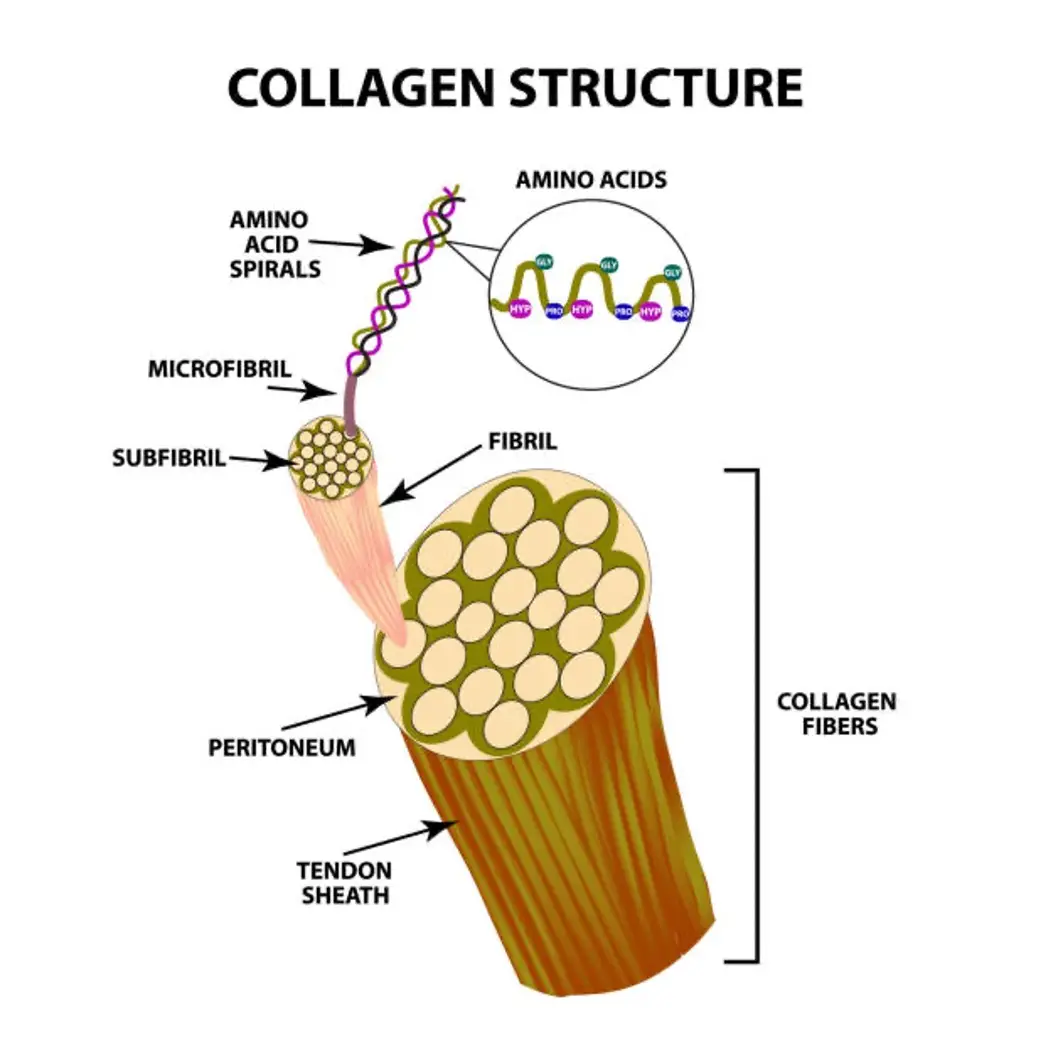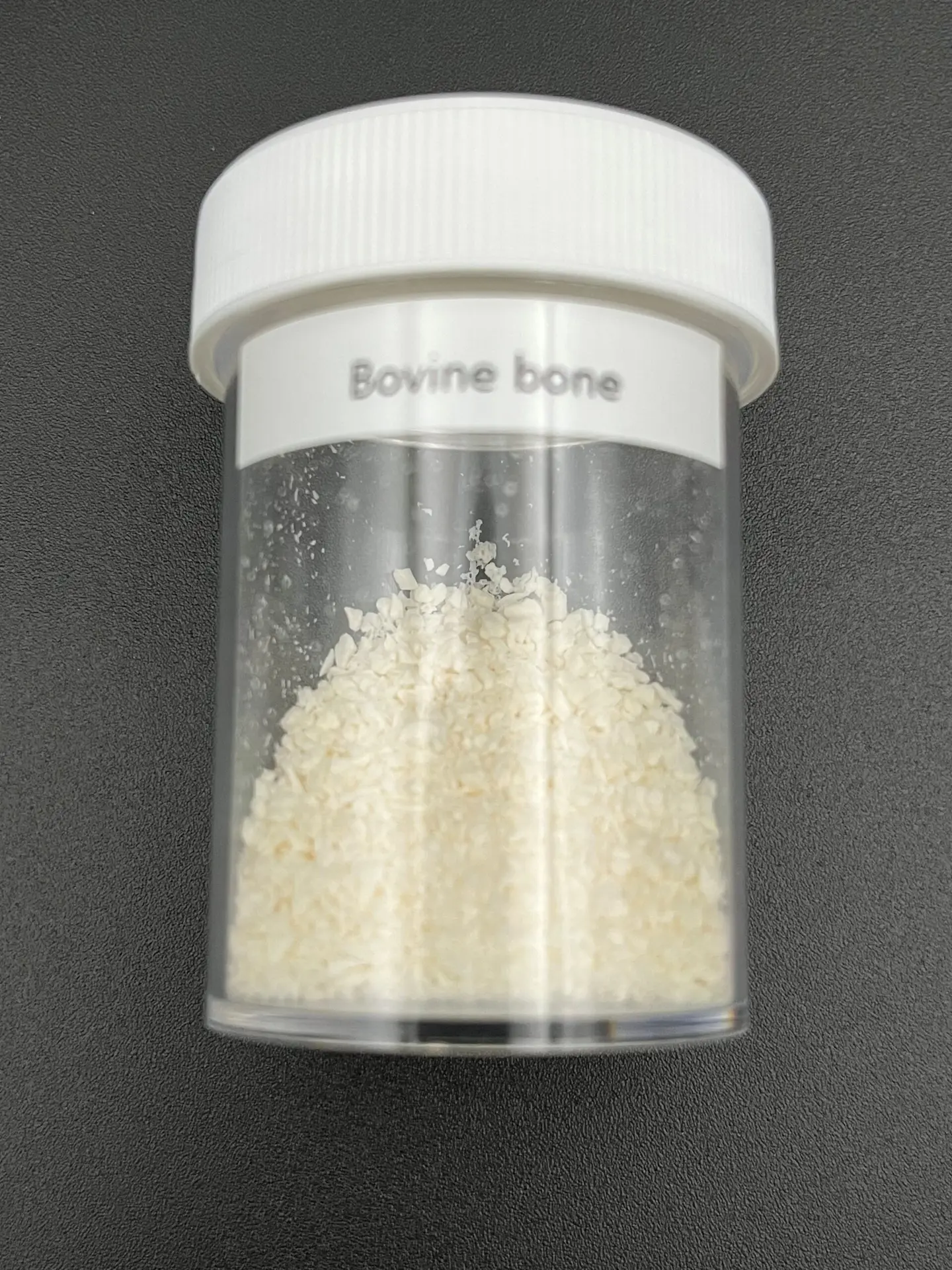/ Biomaterials /
From collagen sponges to dECM scaffolds and beyond: biomaterials open up endless possibilities for regenerative medicine and advanced care. HCM Medical transforms these natural building blocks into safe, certified solutions that make a real difference for patients.
Collagen
Most abundant protein in the body of animals. In humans collagen comprises one-third of the total proteins and the most prevalent component of the extracellular matrix. There are 28 different collagen types. Collagen-I is the most frequent collagen type occurring in the skin and bones.
Type I collagen fibers have a distinct hierarchical structure. They are composed of triple-helical molecules, which self-assemble into fibrils with a characteristic 64 nm banding pattern. These fibrils then further aggregate into larger bundles to form the macroscopic fibers seen in tissues like tendon, skin and bone. Collagen is one of the favorable biomaterials used for biomedical application. Important properties are:


Excellent biocompatibility
Controlled biodegradation
Low immunogenicity
Strong cell interactivity (supporting wound healing and regeneration)s
High water absorption capacity (suitable for hemostatic applications)
Versatility in processing into multiple forms
- Different species: equine, bovine, porcine and fish for example
- Different tissue: tendon and skin
- Different structures: fibrillar, telo and atelo.
The collagens can be processed in different structure, depending on the application need/use. For example:
dECM:
Allograft/autograft tissues can be processes / decellularized using scCO2 for implantation. Like bone, skin and pericard.




